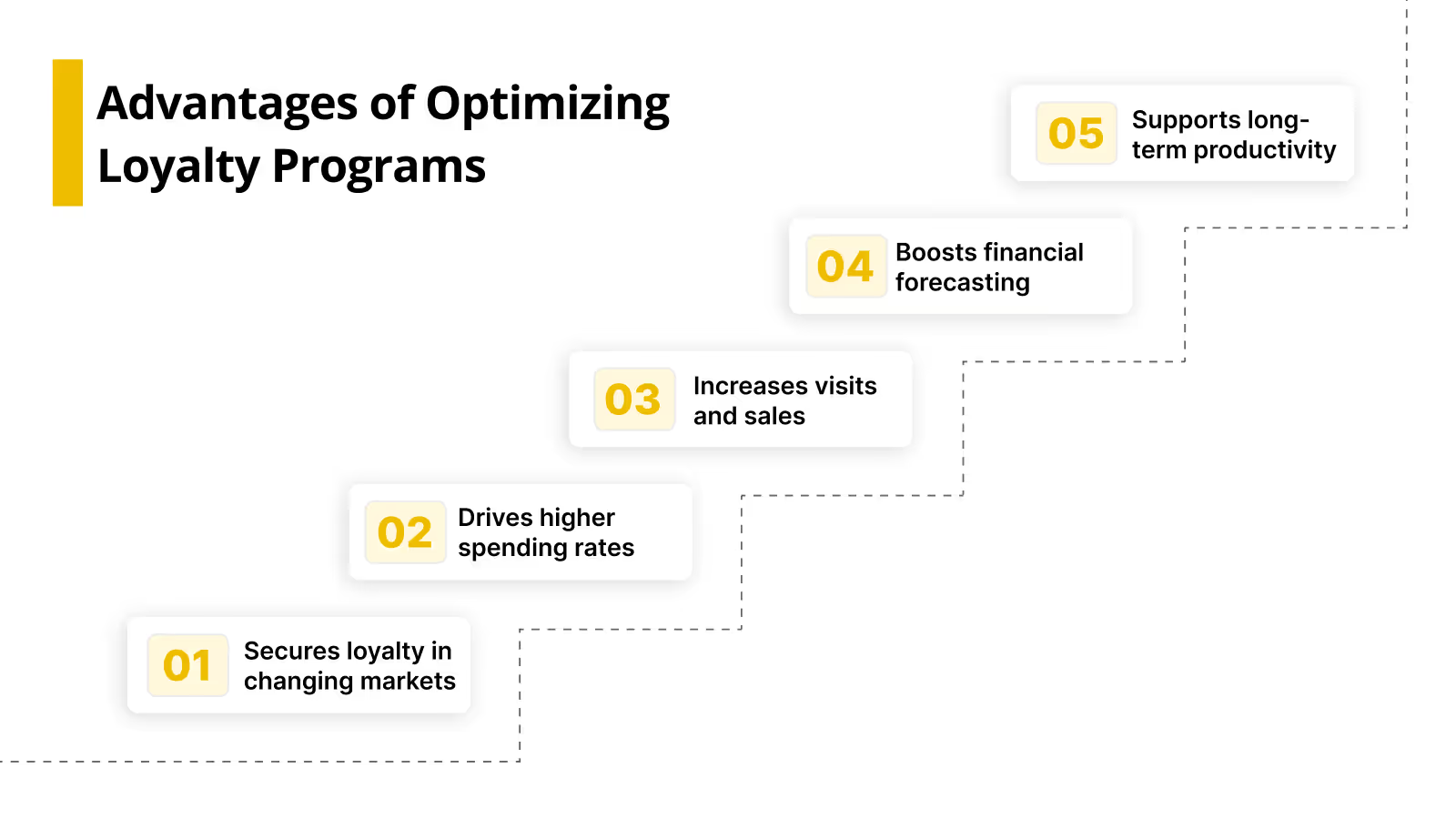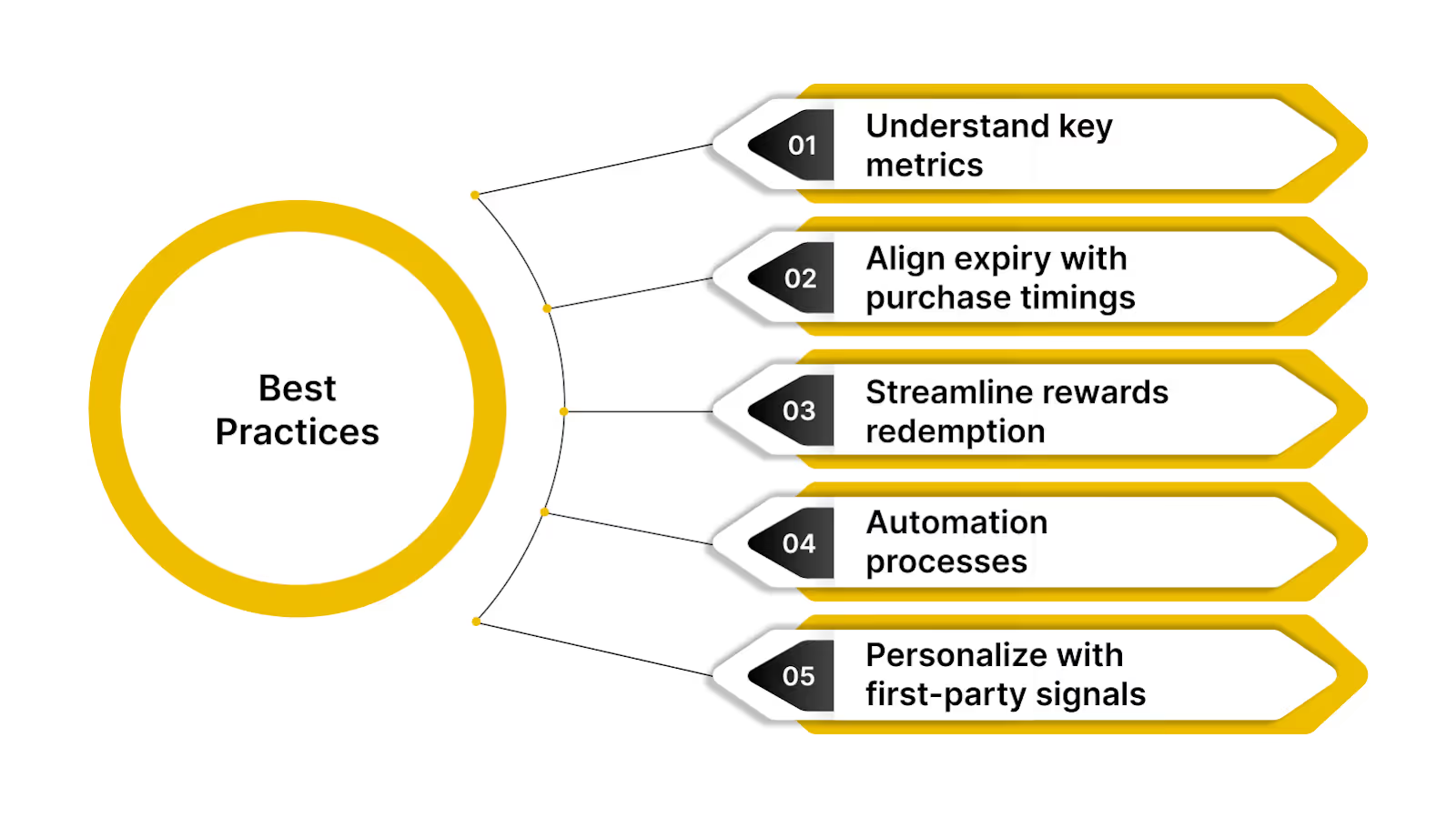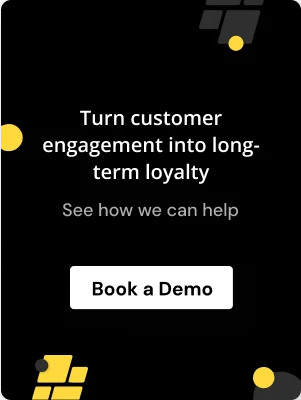.avif)
.avif)
Loyalty programs have become a core strategy for retaining customers; however, not all deliver the same level of engagement or return on investment. 39% of shoppers report choosing a more expensive brand specifically to earn greater rewards, showing how a well-structured program can outweigh price sensitivity. Several brands struggle with making their programs engaging, often finding that sign-ups do not translate into sustained activity or measurable revenue.
In this blog, we will explore how loyalty program optimization works and the steps you need to create a program that delivers results for customers.
At a glance:
- Loyalty program optimization can increase repeat purchase rates, enhance average order value, and lower churn by using rules, redemption flows, and engagement triggers.
- Using customer behavior data, such as redemption rates, incremental revenue per member, and active member share, ensures that program improvements are based on measurable evidence.
- Integrating loyalty programs with e-commerce platforms, POS systems, payment tools, and more creates an earn-and-redeem experience across all customer touchpoints.
- Regularly refreshing rewards, bonus campaigns, and engagement strategies keeps programs engaging for customers to stay active over time.
What is Loyalty Program Optimization?
Loyalty program optimization is a process of enhancing the efficiency of loyalty programs to increase customer engagement and retain existing customers. The primary goal is to develop a program that allows repeat business and improves customer lifetime value (CLV). Such optimization involves assessing factors such as enrollment flow, reward structure, redemption experience, and communication channels to ensure members stay engaged and active.
For ecommerce brands, an effective loyalty program optimization means regularly reviewing performance data and making targeted adjustments. It is essential to test expiry timelines, enhance reward visibility, and optimize product and checkout pages for tailored messaging to different customer segments. With continuous refinement of these elements, you can create a program that attracts members and maintains overall retention.
Let’s understand some of the common types of loyalty programs to improve customer retention.
Types of Loyalty Programs and Their Optimizations

A recent report suggests that 46% of customers are willing to pay more for a company or brand that has a good loyalty or rewards program. Loyalty programs come in various models, each with its unique approach to engaging customers and driving retention, and each requires tailored strategies to optimize performance.
Here are some of the significant types of loyalty programs:
1. Points-Based Rewards System
The model allows customers to earn points for purchases or actions, which can be redeemed later for rewards.
- Optimize earning rules: Offer points for both purchases and engagement actions such as reviews or referrals, to increase overall participation.
- Highlight rewards early: Display available points and reward options on checkout pages and product pages to encourage redemption.
- Test expiry timelines: A shorter expiry time can create a sense of urgency among customers, while longer timelines may have a high-ticket purchase cycle.
- Automate reminders: With the appropriate use of emails and WhatsApp to notify customers regarding point balances and upcoming expirations.
2. Tiered Loyalty Programs
Members progress through various levels based on their activity, unlocking higher-value benefits at each stage.
- Set clear thresholds: Use data to define realistic spending or activity targets for each tier.
- Show tier progress: Display progress bars in accounts and emails to keep customers motivated and engaged, and use gamification strategies, such as progress bars, for effective customer engagement.
- Offer exclusive perks: Provide early access, special discounts, or VIP events to higher-tier members.
- Reassess tier benefits: Review performance data to ensure each tier is delivering measurable engagement.
3. Subscription-Based Loyalty Programs
Customers pay a recurring fee for instant benefits such as free shipping, discounts, or exclusive access.
- Balance free and benefits: Price the subscription so customers understand the value of the program.
- Offer a trial period: Let potential members experience benefits before committing to a product.
- Exclusive access: Offer your customers exclusive access to new product launches or beta testing opportunities.
4. Value-Based Models
Rewards are tied to causes or experiences that align with customers’ values rather than transactional benefits.
- Choose causes carefully: Support initiatives that align with your core audiences.
- Demonstrate impact: It is essential to share the measurable results of contributions or initiatives to optimize loyalty programs.
- Integrate with purchases: Make it easy for customers to contribute or participate through everyday transactions.

Now, let’s explore some of the advantages of an optimized loyalty program.
Advantages of Optimizing Loyalty Programs

When optimizing a loyalty program, it is essential to consider customer behavior insights and strategic adjustments when tweaking rewards for valuable customer interaction.
Here are some of the advantages of loyalty program optimization:
- Protects customer loyalty in shifting markets: A study shows that brand loyalty is projected to drop by 25% in 2025; therefore, it is essential to redefine benefits and make them accessible to maintain relevance for customers.
- Drives higher spending rates: Paid-tier members spend more and shop more frequently compared to free members; therefore, fine-tuning pricing tiers and perks improves shopping frequency.
- Increases visits and sales: Retailers using audience-specific loyalty programs have seen a 23% increase in store visits and a 20% increase in sales, emphasizing the need for precise targeting for better customer engagement.
- Improves financial forecasting and control: Effective tracking of redemption patterns and unused rewards can enhance the accuracy of profitability planning and revenue recognition.
- Supports long-term productivity: Subtle improvements in retention can lead to increased profits over time, solidifying the need for loyalty program optimization as a high-value investment.
Also read: 9 Successful Loyalty Program Examples to learn from in 2025
To implement a successful loyalty program, the following practices can help maintain customer retention and overall engagement rates.
Best Practices for Loyalty Program Optimization

- Understand key metrics: Key performance indicators (KPIs) like incremental revenue per number, AOV list, and churn reduction are necessary to define the effectiveness of an optimized loyalty program.
- Align expiry with purchase timings: It is essential to understand contribution margin and expected redemption to align expiry with typical repeat purchase timing for prompt action without frustrating customers.
- Streamline rewards redemption: Enable members to easily understand their balance and apply rewards on PDPs, in the cart, at checkout, and at the POS. It is also essential to support partial redemptions and real-time balance checks to reduce points of breakage.
- Automation processes: With the help of effective automation, you can manage enrollment, track rewards, and scale strategies for businesses.
- Personalize with first-party signals: Avoid waste and suppress promotions after a conversion using first-party signals, such as lifecycle stages, category affinity, tier progress, cap frequency, and adhering to CCPA/CPRA preferences.
Also read: Loyalty Points Program: How It Works.
Let’s understand the importance of loyalty program optimization with a case study.
How a Skincare Brand Achieved 3x Growth in Loyalty Conversions with Nector’s Retention Engine
One of India’s most renowned science-backed skincare brands faced a familiar challenge as it scaled its D2C presence: customers loved the products, but retention lagged. Discount-based campaigns brought in quick sales, yet they failed to nurture long-term loyalty or generate meaningful advocacy. The brand needed a system that could reward repeat buyers, spark organic referrals, and create a stronger sense of community around its products.
Partnering with Nector, the team restructured its retention strategy around loyalty and referral programs. VIP tiers and birthday rewards added personal touches that encouraged repeat purchases, while a smooth referral flow turned satisfied customers into advocates. This shift moved the brand away from short-term discounts and toward a retention engine that rewarded both loyalty and advocacy.
The results were significant. By Q2 2025, the brand recorded a threefold increase in loyalty conversions compared to its early adoption phase. Referrals became a reliable growth channel, driving nearly three-quarters of Nector-powered orders, while one in four invitations translated into first-time buyers. Together, these numbers reflected more than just higher engagement; they showed how a thoughtfully optimized program could transform retention into a predictable, high-converting growth loop.

Future Trends in Loyalty Programs
Loyalty programs are no longer about points and discounts; they’re becoming an extension of the customer experience. As consumer expectations evolve, the next wave of loyalty will focus less on transactions and more on personalization, integration, and long-term engagement.
- Personalization that feels human: Instead of broad segments, loyalty programs will use real-time data, like purchase timing, browsing behavior, and product affinity, to deliver rewards that feel individually tailored, not mass-generated.
- True omnichannel continuity: Customers increasingly expect their rewards and perks to follow them seamlessly from an app to a website to a physical store. The future isn’t just syncing balances; it’s creating one fluid experience across every touchpoint.
- Predictive loyalty analytics: Programs will rely more on predictive insights, not just historical data. That means spotting churn risk before it happens, adjusting reward visibility dynamically, and optimizing campaign timing based on forecasted behavior.
- Gamification with purpose: Rather than surface-level badges or points, gamification will evolve into meaningful progression systems, where leaderboards, challenges, and milestones tie directly to product discovery and repeat purchases.
In short, the future of loyalty is about making rewards smarter, experiences smoother, and customer engagement more intentional, helping brands move from transactional incentives to genuine relationship-building.
Make Engaging Loyalty Programs with Nector
When you develop an engaging loyalty program with Nector, you get total control over how rewards are displayed and earned across your store. You can place points, tier status, and redemption options directly on product pages, in the cart, at checkout, and in POS systems, making effortless redemption. You also get fine-tuned control over coin expiration and bonus campaigns that drive action without overwhelming members.
Beyond visuals and rules, Nector brings deep flexibility through customization and integrations. With over 50 integrations across ecommerce platforms, POS systems, payment gateways, and review apps, Nector ensures your loyalty program works across every customer touchpoint.
Sign up now to convert your one-time buyers into lifetime customers.
Wrapping Up
Effective loyalty program optimization focuses on utilizing data to refine earning rules, redemption flows, and engagement metrics, delivering measurable outcomes. It is essential to track KPIs such as incremental revenue per number repeat purchase frequency, and run controlled tests to understand which adjustments truly lift performance. With built-in analytics and coin expiry controls, you can implement these changes and align your program with improved customer behavior and more accurate probability goals.
Enhance your loyalty program optimization and strengthen your customer loyalty. Let Nector take control of your loyalty programs and build connections that improve engagement rates. Book a demo with us!
FAQs
How can A/B testing improve loyalty program performance?
A/B testing allows you to compare different program variables such as earning rules, point expiry periods, and reward display placements. By running controlled experiments, you can see which version delivers better engagement or revenue outcomes.
What metrics indicate loyalty program profitability?
Profitability is best assessed through metrics such as incremental revenue per member, cost per redemption, and the lift in repeat purchase frequency. These numbers help distinguish between genuine revenue growth and activity that simply shifts existing sales. Monitoring them ensures the program contributes positively to the bottom line.
Why should loyalty program liability be forecasted?
Forecasting liability accounts for the financial obligation tied to unredeemed rewards. Accurate projections enhance revenue recognition compliance and enable the allocation of the proper budget to cover redemptions. This prevents overspending while maintaining customer expectations.
How does POS integration affect loyalty program accuracy?
POS integration ensures that transactions from physical stores update loyalty balances in real time. This eliminates discrepancies between online and offline systems, reducing customer disputes. It also supports a consistent earn-and-redeem experience across every channel.
What role does the redemption rate play in optimization decisions?
Redemption rate measures how appealing and accessible your rewards are to members. A low rate may indicate poor reward visibility, low perceived value, or overly restrictive rules. Adjusting these elements can significantly improve engagement and program ROI.
Start Building Customer Retention That Lasts






.webp)



